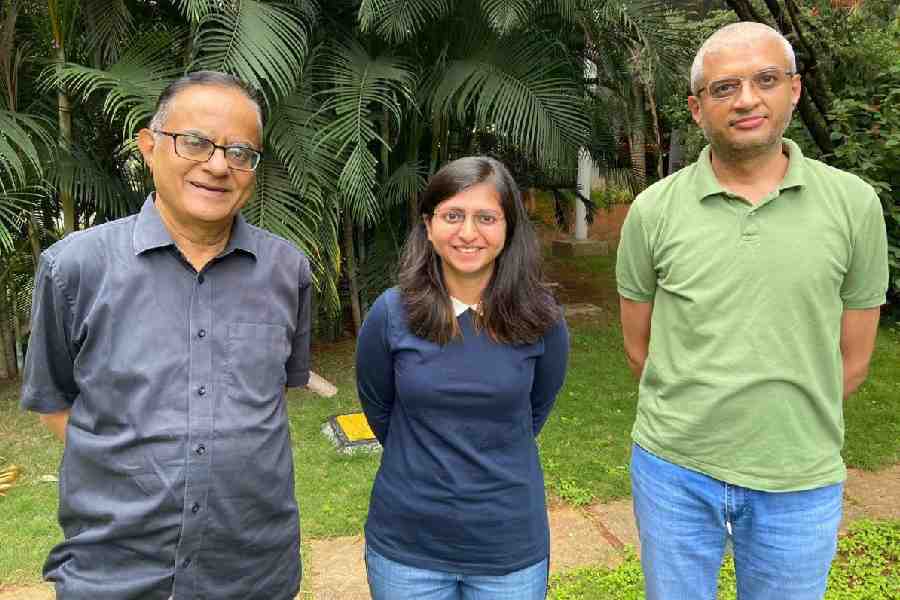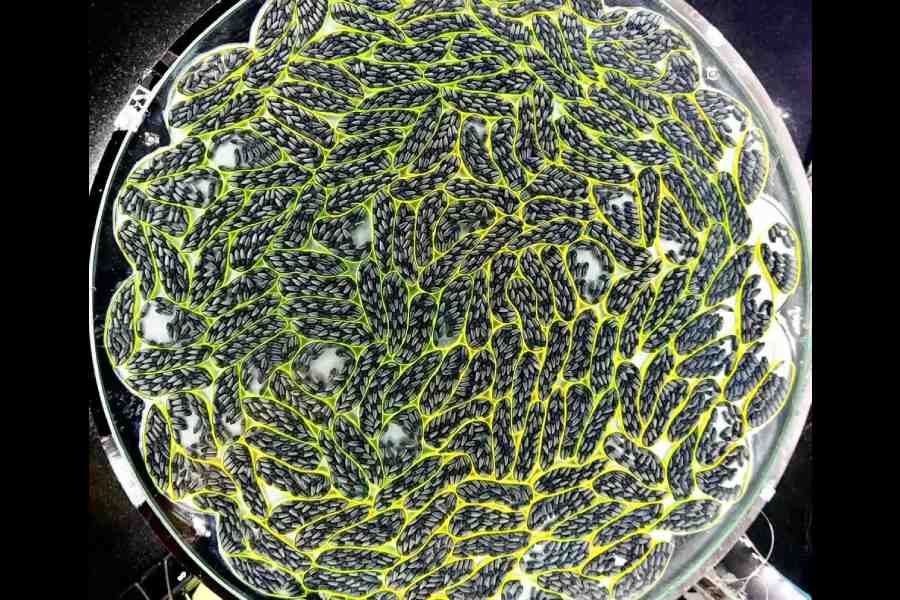Scientists in India have generated the first experimental evidence to show that timely shape changes by cells alone can explain “cellular unjamming”, a critical biological process underlying wound healing, asthma mechanisms and cancer spread.
The researchers at the Jawaharlal Nehru Centre for Advanced Scientific Research, Bangalore, have developed plastic-and-paper mimics of living cells and established that they can shift from jammed to unjammed states simply by altering shapes — morphing, for instance, from a hexagon into an oval.
Their cell mimics — thin circular paper strips, each containing 20 granular rice-sized plastic particles — appear ludicrously simplistic in contrast to real living cells, each typically packed with genetic material, millions of proteins, and thousands of mitochondria or cellular powerhouses, among other constituents.
But the mimics change their shape just like living cells do and have helped scientists probe the mechanisms underlying unjamming — a process in which densely packed cells shift from a jammed solid-like state into an unjammed fluid-like state.
“Many biological processes require clusters of cells to unjam themselves — but how exactly unjamming occurs has been a mystery,” said Pragya Arora, a research scholar formerly at JNCASR and currently an experimental physicist at Brandeis University in the US.
Biologists and medical researchers have over the past decade determined that unjamming is a key step in the process of wound healing and the migration of cancer cells from a primary site to distant organs. Studies have also revealed an unjamming-jamming transition in the bronchial epithelial cells in asthma.
“A great way to imagine unjamming is how a cut on the skin heals,” said Rajesh Ganapathy, a scientist at the JNCASR who supervised the research. “When the skin is broken, cells nearby dislodge themselves from a jam-packed state, squish themselves into a different shape and move towards the cut.”

Ajay Sood (left), Pragya Arora, and Rajesh Ganapathy.
Biologists had proposed two independent mechanisms to explain unjamming — cellular shape changes and a decrease in the density of cells in the packed region that might occur when some cells die. The JNCASR study has now established that shape change alone is sufficient for unjamming.
The JNCASR researchers and their collaborators, Ajay Sood, a physicist at the Indian Institute of Science, Bangalore, Souvik Sadhukan and Saroj Nandi at the Tata Institute of Fundamental Research, Hyderabad, and Dapeng Bi at Northeastern University in the US have published their findings in the journal
Nature Communications.
A biophysicist in Germany who was not associated with the JNCASR study has described the experiments and the findings as a “milestone” in the quest to understand unjamming.
“Our findings reinforce the concept that simple principles of physics lie at the heart of critical biological processes,” Ganapathy said.










